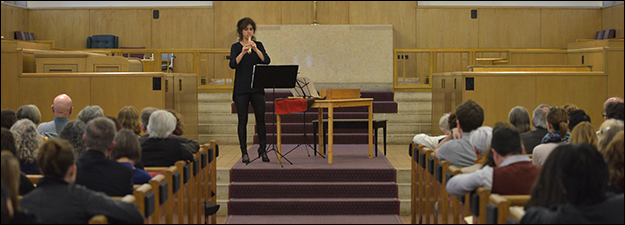Translating Sacred Bodies
Sponsoring Organization(s)
Beinecke Rare Book & Manuscript Library, Yale Univ.; Medieval Studies Program, Yale Univ.
Organizer Name
Gina Marie Hurley; Clara Wild; Kristen Herdman
Organizer Affiliation
Yale Univ.; Yale Univ.; Yale Univ.
Presider Name
Gina Marie Hurley
Paper Title 1
Translating Passion Relics across Religious Boundaries and the Manifestation of Thingly Agency
Presenter 1 Name
Siobhain Bly Calkin
Presenter 1 Affiliation
Carleton Univ.
Paper Title 2
"Nec tamen corpus eius continebat" : Making and Breaking the Bond between Traveling Relics and Their Reliquaries
Presenter 2 Name
Kate M. Craig
Presenter 2 Affiliation
Auburn Univ.
Paper Title 3
Sacrum Corpus Extractum: Overview on the Subject of Translation of Corpi Santi to the New Spain during the Eighteenth and Nineteenth Century
Presenter 3 Name
Montserrat Andrea Báez Hernández (Congress Travel Award Winer)
Presenter 3 Affiliation
Univ. Nacional Autónoma de México
Start Date
12-5-2018 3:30 PM
Session Location
Bernhard 106
Description
As Patrick Geary demonstrated with the publication of Furta Sacra: Thefts of Relics in the Central Middle Ages, the theft of relics had undeniable social, political, and economic impact on the places and spaces between which they were translated. More recently, work by Robyn Malo and Seeta Chaganti has continued to push the study of relics in promising new directions. Saints and holy figures often found miraculous ways to express either approval or anxiety about the movement of their relics, as when Osbern Bokenham’s St. Margaret appears to ask two hermits to move her neglected body to Mount Flask, or when, in some tellings of the legend of Guy of Warwick, the holy knight’s body becomes so heavy as to be immoveable. Papers might address these and other questions: How has Furta Sacra affected the study of relics over the last forty years? How did saints’ bodies resist or participate in their own division and translation? How did narratives of the translation and division of saint’s relics attempt to resolve the moral and theological issues of relic theft, and what are the implications for relics as cultural, historical, and artistic objects? What can the practice of furta sacra tell us about ideas of ownership and the will of both saints and God himself?
Gina M. Hurley
Translating Sacred Bodies
Bernhard 106
As Patrick Geary demonstrated with the publication of Furta Sacra: Thefts of Relics in the Central Middle Ages, the theft of relics had undeniable social, political, and economic impact on the places and spaces between which they were translated. More recently, work by Robyn Malo and Seeta Chaganti has continued to push the study of relics in promising new directions. Saints and holy figures often found miraculous ways to express either approval or anxiety about the movement of their relics, as when Osbern Bokenham’s St. Margaret appears to ask two hermits to move her neglected body to Mount Flask, or when, in some tellings of the legend of Guy of Warwick, the holy knight’s body becomes so heavy as to be immoveable. Papers might address these and other questions: How has Furta Sacra affected the study of relics over the last forty years? How did saints’ bodies resist or participate in their own division and translation? How did narratives of the translation and division of saint’s relics attempt to resolve the moral and theological issues of relic theft, and what are the implications for relics as cultural, historical, and artistic objects? What can the practice of furta sacra tell us about ideas of ownership and the will of both saints and God himself?
Gina M. Hurley


